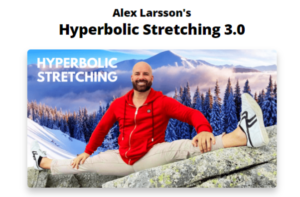—>Main Page -Because Your Health is Important
—>Bedscape.com –Because Your Sleep is Important
The invigorating experience of a cold shower
Imagine stepping into the shower, turning on the faucet, and feeling a rush of icy-cold water cascading over your body. The shock of the cold instantly wakes you up, leaving you feeling refreshed, alert, and ready to conquer the day. It’s a sensation that is both invigorating and rejuvenating, making you wonder about the magic behind this simple act. Welcome to the world of cold showers! Cold therapy, the practice of exposing the body to cold temperatures, has gained significant popularity in recent years. From ancient civilizations utilizing ice baths for their therapeutic benefits to modern cryotherapy chambers, cold therapy has captured the attention of health enthusiasts, athletes, and wellness seekers alike. Among the various forms of cold therapy, cold showers have emerged as a convenient and accessible way to experience the numerous benefits of cold exposure.
In this blog post, we delve into the world of cold showers and uncover the surprising benefits and techniques associated with this seemingly simple act. Beyond the initial shock and exhilaration, cold showers have been found to have a profound impact on our physical and mental well-being. We will explore the science behind cold showers, discussing how they influence our body’s systems and trigger a cascade of positive effects. Moreover, we will examine the wide range of health benefits that cold showers can offer. From boosting our immune function and improving cardiovascular health to enhancing mood and promoting weight loss, the advantages of incorporating cold showers into our routine are far-reaching. To ensure a smooth transition into the world of cold showers, we will provide practical tips and step-by-step instructions on how to incorporate them into your daily routine. We understand that taking a cold shower may seem daunting at first, but we will guide you through the process, helping you overcome initial discomfort and build tolerance over time. So, if you’re ready to explore the invigorating world of cold showers and unlock their incredible benefits, let’s dive in!
Understanding Cold Therapy
Cold therapy, also known as cryotherapy, is a therapeutic practice that involves exposing the body to cold temperatures for various health benefits. While the concept of using cold for healing purposes dates back centuries, it has gained renewed attention in recent times. Ancient civilizations, including the Greeks, Romans, and Scandinavians, recognized the power of cold exposure and utilized techniques like ice baths and cold compresses to alleviate pain, reduce inflammation, and promote healing.
Different forms of cold therapy
Cold therapy comes in different forms, each offering unique ways to experience the benefits of cold exposure. Three popular forms of cold therapy include:
- Ice Baths: Ice baths involve immersing the body in cold water, typically with added ice or chilled water, for a designated period. This method is commonly used by athletes to aid in recovery, reduce muscle soreness, and enhance performance.
- Cryotherapy: Cryotherapy is a more modern approach to cold therapy, involving exposure to extremely low temperatures for a short duration. Whole-body cryotherapy chambers and localized cryotherapy devices are used to target specific areas of the body and provide various therapeutic effects.
- Cold Showers: Cold showers, the focus of this blog post, are a simple and accessible form of cold therapy. It involves taking showers with water at a cooler temperature than usual, typically around 50 to 60 degrees Fahrenheit (10 to 15 degrees Celsius). Cold showers provide a convenient way to experience the benefits of cold exposure without the need for specialized equipment.
Science behind the physiological responses to cold exposure
When exposed to cold temperatures, our bodies undergo a series of physiological responses to regulate and adapt to the environment. The primary mechanisms involved include:
- Constriction of Blood Vessels: Cold exposure causes blood vessels near the skin’s surface to constrict, redirecting blood flow to vital organs and deeper tissues. This response helps conserve body heat and maintain core temperature.
- Activation of Brown Fat: Cold exposure stimulates the activation of brown adipose tissue (BAT), also known as brown fat. Unlike white fat, which stores energy, brown fat generates heat by burning calories. Increasing brown fat activity can potentially aid in weight management and metabolism.
- Release of Endorphins and Neurotransmitters: Cold exposure triggers the release of endorphins, the body’s natural painkillers, which can create a sense of euphoria and improve mood. Additionally, neurotransmitters such as norepinephrine and dopamine are released, promoting alertness, focus, and overall mental well-being.
- Activation of the Sympathetic Nervous System: Cold exposure activates the sympathetic nervous system, commonly known as the “fight or flight” response. This leads to increased heart rate, blood pressure, and oxygen consumption, providing a boost of energy and increased mental and physical alertness.
- Stimulation of the Immune System: Cold exposure has been found to enhance the function of the immune system. It increases the production of white blood cells, stimulates the release of anti-inflammatory cytokines, and improves the body’s ability to combat infections and illnesses.
By understanding the physiological responses to cold exposure, we can appreciate the potential benefits and explore the practical applications of cold therapy, particularly in the context of cold showers.
The Science behind Cold Showers
Cold showers have a profound impact on various systems within our bodies, leading to a range of physiological responses and potential benefits. Let’s explore how cold showers influence some key systems:
- Impact on the Cardiovascular System: Cold showers cause vasoconstriction, where blood vessels near the skin’s surface narrow. This constriction redirects blood flow to vital organs, increasing overall circulation and improving cardiovascular function. Regular cold showers can help improve blood pressure, enhance heart health, and promote efficient oxygen delivery throughout the body.
- Activation of the Sympathetic Nervous System: Cold exposure through cold showers activates the sympathetic nervous system, which is responsible for the “fight or flight” response. This activation increases heart rate, blood pressure, and oxygen consumption. The resulting surge of energy and heightened alertness can provide a natural boost to both mental and physical performance.
- Release of Endorphins and Other Neurotransmitters: Cold showers stimulate the release of endorphins, which are natural painkillers that induce feelings of euphoria and well-being. Additionally, other neurotransmitters such as norepinephrine and dopamine are released, promoting increased focus, improved mood, and mental clarity. These neurochemical responses can have a positive impact on mental health, reducing symptoms of stress, anxiety, and depression.
The concept of hormesis and its relation to cold exposure
One concept closely associated with the effects of cold exposure is hormesis. Hormesis is the phenomenon where exposure to mild stressors or challenges triggers a positive adaptive response in the body, leading to enhanced resilience and overall health. Cold showers act as a form of hormetic stress, prompting the body to adapt and become stronger in response to the cold stimulus. When we subject our bodies to the brief stress of cold water, it triggers a series of physiological adaptations that ultimately result in improved physiological and mental well-being. Hormesis is believed to play a role in the many benefits associated with cold exposure, such as increased immune function, improved metabolism, and heightened mental performance.
Healthy Organic Weight Management Coffee with Mushrooms
– Less than 60 cents per cup
Yes, this is very likely the longest name for a coffee you’ve ever seen. But the truth is, with all of the amazing benefits and ingredients we’ve packed into this blend, we could have added even more words, like adaptogens, green tea, healthy fiber, maca, and especially delicious!
Not only does LiveGood Organic coffee combine the highest quality ingredients from the cleanest, most pure and lush places on the planet, it is the FIRST and ONLY coffee enhanced with healthy fiber to reduce hunger, formulated with maca to help support learning and memory while improving mood, plus green tea to promote healthy brain function and stimulate fat burning, AND adaptogens in the form of 6 of the world’s most powerful mushrooms to ease stress, support a healthy body, and help you feel great! No coffee on the planet provides as many benefits as LiveGood Healthy Organic Weight Management Coffee with Mushrooms
From the first time you taste our delicious blend, and experience the amazing results, you may never want to drink another coffee ever again!
Supporting scientific studies and research on cold showers
Numerous scientific studies have explored the effects of cold showers on the body, validating the potential benefits associated with this practice. Research has shown that cold exposure through cold showers can have positive effects on various aspects of health, including:
- Immune function: Cold showers have been found to stimulate the production of white blood cells and increase immune system activity, potentially improving the body’s ability to fight off infections.
- Mood and mental well-being: Cold exposure triggers the release of endorphins, resulting in a mood-enhancing effect. Studies have also shown that cold showers can alleviate symptoms of depression and improve overall mental clarity and alertness.
- Athletic recovery: Cold showers aid in reducing inflammation, muscle soreness, and accelerating recovery after intense physical exercise, enabling athletes to bounce back more quickly.
- Metabolism and weight management: Cold exposure activates brown fat, which helps burn calories to generate heat, potentially aiding in weight management and boosting metabolism.
How to Incorporate Cold Showers into Your Routine
Introducing cold showers into your routine can be a gradual process to allow your body to adapt to the cold temperature. Here’s a step-by-step guide:
- Start with warm water: Begin your shower with your usual warm water temperature to allow your body to adjust and relax.
- Gradually decrease the temperature: After a few minutes of warm water, start gradually reducing the temperature by turning the faucet slightly towards the cold side. Begin with a small decrease in temperature and gradually work your way to cooler water.
- Focus on exposure time: Initially, aim for short bursts of cold water exposure, such as 30 seconds to a minute. As you become more comfortable, gradually increase the duration.
- Alternate warm and cold: For a milder approach, consider alternating between warm and cold water throughout your shower. This technique, known as contrast showers, can provide additional benefits and help with tolerance building.
Taking cold showers may initially feel uncomfortable, but with time and practice, you can overcome the discomfort and build tolerance. Here are some tips:
- Mindset and breathing: Approach cold showers with a positive mindset and focus on slow, deep breathing. This can help relax your body and mind, making the experience more manageable.
- Gradual exposure: Start with shorter exposures to cold water and gradually increase the duration as your tolerance improves. Listen to your body and find a balance that works for you.
- Gradual temperature adjustment: Rather than subjecting yourself to the coldest temperature immediately, slowly decrease the temperature over time. This allows your body to adjust and adapt gradually.
- Gradual progress: Be patient with yourself and understand that building tolerance to cold showers takes time. Celebrate small victories and appreciate the progress you make along the way.

-
From Stiff To Fully Flexible In 8 Minutes Whether you want to do full splits, back bends, forward bends and more….
-
Or if you need to relieve any joint and muscle in your body…
-
No matter your age, body type or stiffness level…
-
Try these strange 8-minute stretching routines and multiply your flexibility in just weeks…
-
Based on western science, this higly effective exercise protocol has already helped over 1 million people achieve flexibility they never thought to achieve…
-
Developed by my friend Alex, one of the most respected flexibility exeprets in the world you can get all details about the routine here.
Duration and frequency recommendations for cold showers
The duration and frequency of cold showers can vary depending on individual preferences and tolerance levels. Here are some general recommendations:
- Duration: Aim for at least 2-3 minutes of cold water exposure per shower session. However, the duration can be adjusted based on your comfort level and time constraints.
- Frequency: Start with 2-3 cold showers per week and gradually increase the frequency as you become more accustomed to the cold. Some individuals may prefer daily cold showers, while others may find benefits with just a few per week.
- Listen to your body: Pay attention to how your body responds to cold showers. If you feel excessively cold, uncomfortable, or experience any adverse effects, adjust the duration or frequency accordingly.
Safety precautions and considerations
While cold showers are generally safe, it’s important to keep a few safety precautions in mind:
- Temperature moderation: Avoid extremely cold water that could lead to prolonged discomfort or potential health risks. Find a temperature that is comfortably cold but not excessively icy.
- Medical conditions: If you have any pre-existing medical conditions, such as Raynaud’s disease or cardiovascular issues, consult with your healthcare provider before incorporating cold showers into your routine.
- Gradual progression: Always introduce cold showers gradually to allow your body to adjust. Pushing yourself too quickly or for extended durations may cause unnecessary stress or discomfort.
- Sensations of numbness or dizziness: If you experience prolonged numbness, dizziness, or any unusual sensations during a cold shower, discontinue the practice and consult a healthcare professional.
By following these guidelines and considering your individual comfort levels, you can safely incorporate cold showers into your routine and experience the potential benefits they offer for your overall well-being.
The Wim Hof Method: Activate Your Full Human Potential  Audible Audiobook – Unabridged
Audible Audiobook – Unabridged
LISTEN TO AUDIOBOOK
Additional Strategies and Techniques for Cold Therapy
Contrast Showers: Alternating between hot and cold water
Contrast showers involve alternating between hot and cold water during your shower. This technique enhances the benefits of cold therapy and provides a stimulating experience for your body. Here’s how to incorporate contrast showers into your routine:
- Start with warm water: Begin your shower with warm water for a couple of minutes to warm up your body.
- Switch to cold water: Gradually decrease the water temperature to cold or slightly cooler than your comfort level. Stay under the cold water for about 30 seconds to a minute.
- Alternate between hot and cold: Repeat the cycle, switching back and forth between hot and cold water for a total of 3 to 4 cycles. End your shower with cold water.
Contrast showers promote circulation, boost energy levels, and can be particularly beneficial for muscle recovery and reducing inflammation.
Cold Water Face Splashes and Local Cold Exposure
In addition to cold showers, you can incorporate cold water face splashes and localized cold exposure into your routine. These techniques provide targeted benefits and can be easily incorporated throughout the day. Here’s how to do it:
- Cold Water Face Splashes: Fill a basin or sink with cold water and splash it on your face. This technique helps awaken your senses, tighten pores, and promote a refreshed appearance. You can do this in the morning or whenever you need a quick pick-me-up during the day.
- Local Cold Exposure: Target specific areas of your body by applying cold packs, ice cubes, or cold towels. This technique is particularly useful for alleviating localized pain, reducing inflammation, and accelerating recovery in specific muscles or joints.
Ice Baths and Cryotherapy: Exploring Other Cold Therapy Options
Ice baths and cryotherapy chambers offer more intense forms of cold therapy and can provide additional benefits. These options require specialized equipment or facilities, but they can be worth exploring if you’re seeking more comprehensive cold exposure experiences. Here’s an overview of these techniques:
- Ice Baths: Ice baths involve immersing your body in a tub or pool filled with cold water and ice for a specified duration, typically around 10 to 20 minutes. Ice baths are commonly used by athletes for muscle recovery, reducing inflammation, and enhancing overall performance.
- Cryotherapy: Cryotherapy involves exposing your body to extremely low temperatures, typically in a specialized chamber. Whole-body cryotherapy sessions last a few minutes, during which the temperature can drop to -200 degrees Fahrenheit (-130 degrees Celsius). Cryotherapy is known to provide a range of benefits, including pain relief, reduced inflammation, improved mood, and increased metabolism.
Before trying ice baths or cryotherapy, it’s essential to consult with a healthcare professional, particularly if you have any underlying health conditions or concerns.






